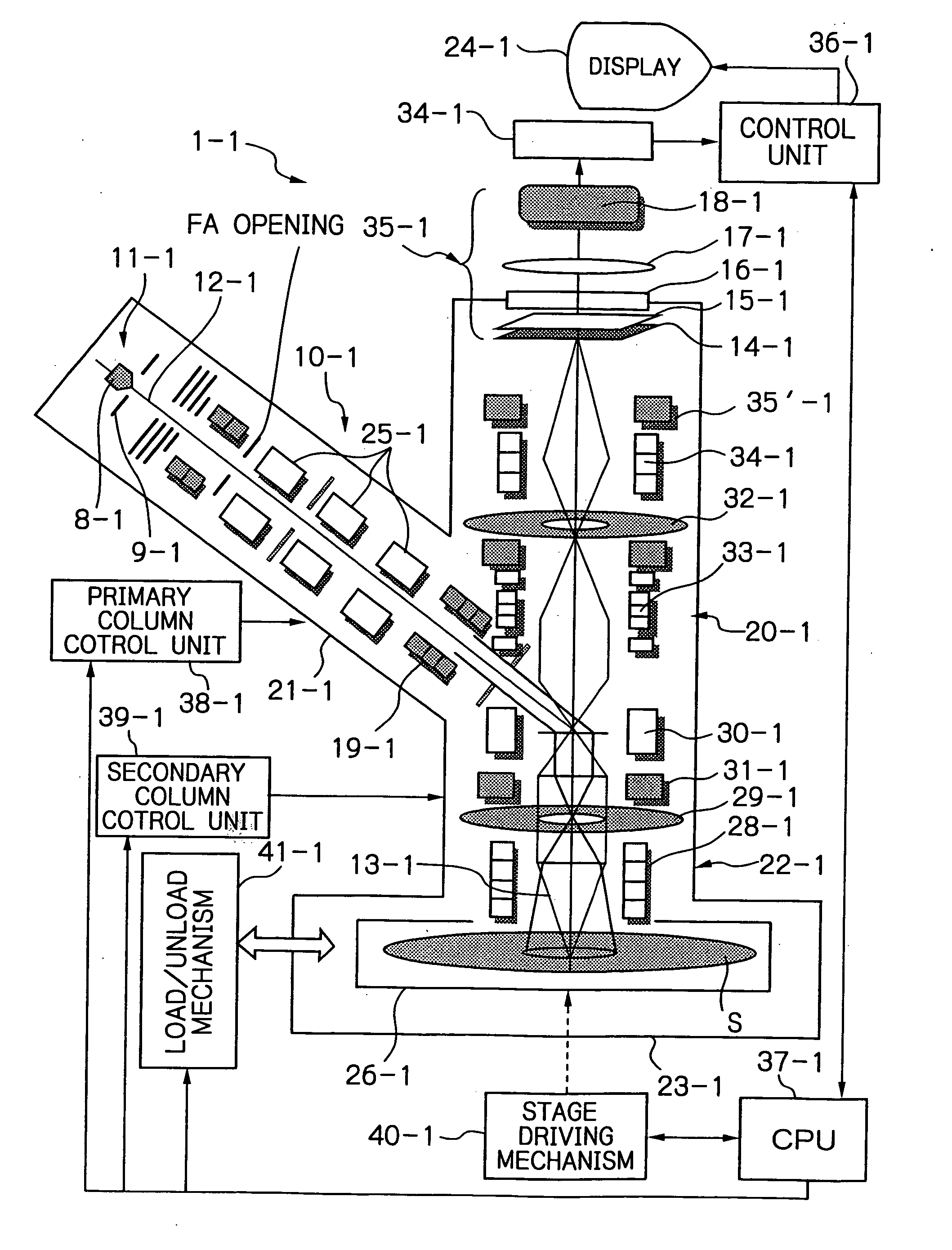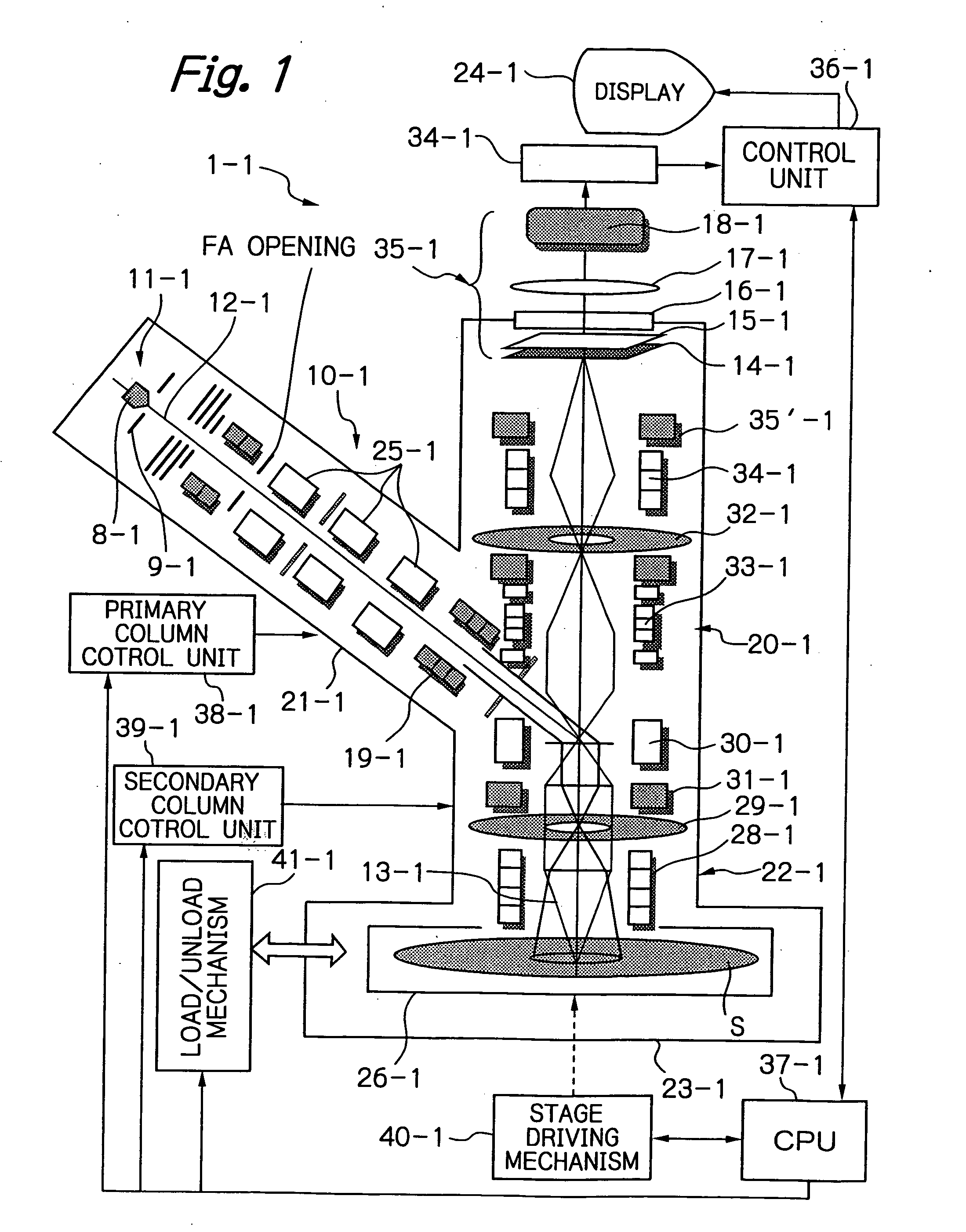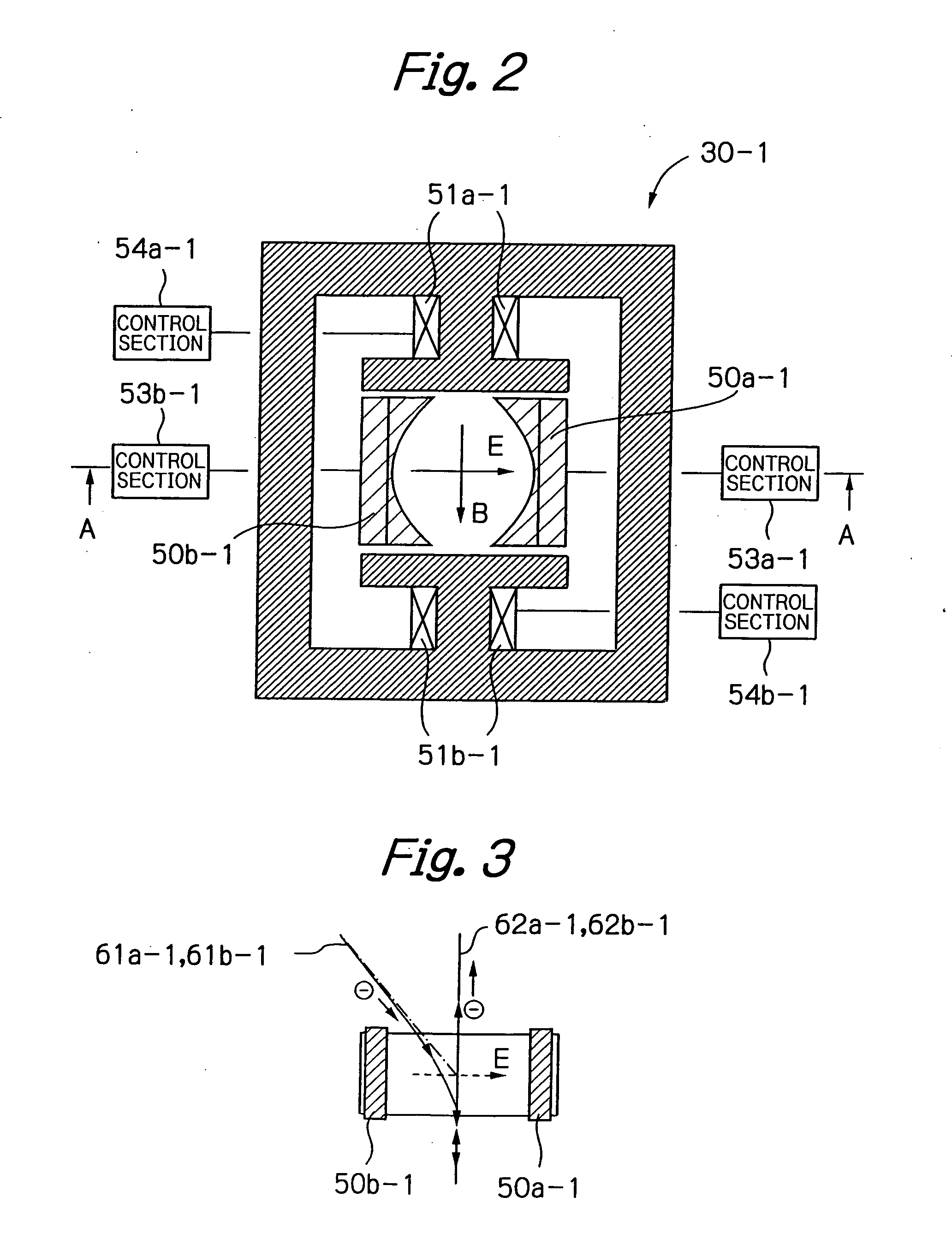Apparatus for inspection with electron beam, method for operating same, and method for manufacturing semiconductor device using former
a technology of electron beam and electron beam, which is applied in the direction of material analysis using wave/particle radiation, instruments, nuclear engineering, etc., can solve the problems of low inspection speed, high cost of inspection apparatus, and inferior inspection apparatus of electron beam method in view of throughput, so as to prevent the accuracy of defect detection from being deteriorated and achieve higher accuracy
- Summary
- Abstract
- Description
- Claims
- Application Information
AI Technical Summary
Benefits of technology
Problems solved by technology
Method used
Image
Examples
first embodiment
A Defect Inspection System of Image Projecting Type
[0142]FIG. 1 shows a schematic general configuration of a defect inspection system using an electron beam apparatus 1-1 of image projecting type according to a first embodiment of the present invention. As shown in FIG. 1, the electron beam apparatus 1-1 comprises a primary column 21-1, a secondary column 22-1 and an inspection chamber 23-1. It is to be appreciated that on the purpose of this application, the context of the term “inspection” includes an evaluation apparatus for evaluating a result of the inspection.
[0143] An electron gun 11-1 comprising a cathode 8-1 and an anode 9-1 is arranged in an inside of the primary column 21-1, and an primary optical system 10-1 is arranged along an optical axis of an electron beam 12-1 (a primary electron beam) radiated from the electron gun 11-1. Further, a stage 26 is installed in an interior of the inspection chamber 23-1 and a substrate S (e.g., a wafer) as a sample is loaded on the s...
second embodiment
[0186] A pattern inspection apparatus according to a second embodiment has a combination of two functions including a function for image projecting and a function as a scanning electron microscope (i.e., a function for detecting a secondary emission beam generated by scanning with a primary electron beam), in which each of these two functions can be easily switched to each other simply by an electrical operation, as will be described later.
[0187] The pattern inspection apparatus according to the second embodiment can be accomplished by employing the configuration of the electron beam apparatus 1-1 shown in FIG. 1, and further adding thereto the function as the scanning electron microscope.
[0188] The function for the image projecting is mainly used in a pattern inspection for a hardly-charged sample, while the function as the scanning electron microscope is mainly used in a pattern inspection for an easily-charged sample or in a mark detection in a registration to be preformed prio...
third embodiment
[0199] Since a defect inspection apparatus according to a third embodiment employs a defect inspection system using the electron beam apparatus 1-1 of FIG. 1, the similar numeric references are used to designate the similar components and a detailed description on the configuration of this defect inspection apparatus will be omitted.
[0200] For the MCP 14-1 of FIG. 1, it is obvious from FIG. 5, in which the operating time is represented along the lateral axis and the multiplication factor is represented along the longitudinal axis, that the multiplication factor decreases as the operating time increases. Further, it is also obvious from FIG. 6, which indicate the correlation between the voltage applied to the MCP (sometimes referred to as MCP applied voltage) and the MCP multiplication factor while representing the MCP applied voltage along the lateral axis and the MCP multiplication factor along the longitudinal axis, that the MCP multiplication factor increases in monotone up to a...
PUM
| Property | Measurement | Unit |
|---|---|---|
| size | aaaaa | aaaaa |
| width | aaaaa | aaaaa |
| diameter | aaaaa | aaaaa |
Abstract
Description
Claims
Application Information
 Login to View More
Login to View More - R&D
- Intellectual Property
- Life Sciences
- Materials
- Tech Scout
- Unparalleled Data Quality
- Higher Quality Content
- 60% Fewer Hallucinations
Browse by: Latest US Patents, China's latest patents, Technical Efficacy Thesaurus, Application Domain, Technology Topic, Popular Technical Reports.
© 2025 PatSnap. All rights reserved.Legal|Privacy policy|Modern Slavery Act Transparency Statement|Sitemap|About US| Contact US: help@patsnap.com



